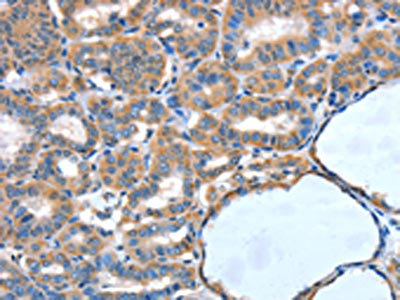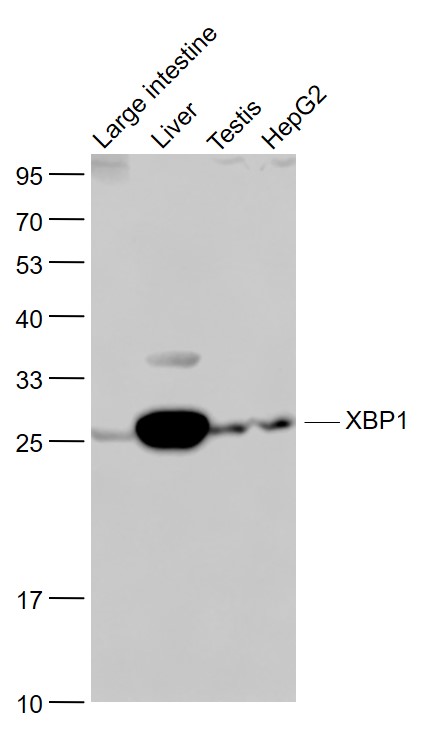
The image on the left is immunohistochemistry of paraffin-embedded Human breast cancer tissue using CSB-PA027191(XBP1 Antibody) at dilution 1/60, on the right is treated with fusion protein. (Original magnification: x200)
XBP1 Antibody
CSB-PA027191
ApplicationsELISA, ImmunoHistoChemistry
Product group Antibodies
ReactivityHuman
TargetXBP1
Overview
- SupplierCusabio
- Product NameXBP1 Antibody
- Delivery Days Customer20
- ApplicationsELISA, ImmunoHistoChemistry
- CertificationResearch Use Only
- ClonalityPolyclonal
- ConjugateUnconjugated
- Gene ID7494
- Target nameXBP1
- Target descriptionX-box binding protein 1
- Target synonymsTREB-5, TREB5, XBP-1, XBP2, X-box-binding protein 1, tax-responsive element-binding protein 5
- HostRabbit
- IsotypeIgG
- Protein IDP17861
- Protein NameX-box-binding protein 1
- Scientific DescriptionThis gene encodes a transcription factor that regulates MHC class II genes by binding to a promoter element referred to as an X box. This gene product is a bZIP protein, which was also identified as a cellular transcription factor that binds to an enhancer in the promoter of the T cell leukemia virus type 1 promoter. It may increase expression of viral proteins by acting as the DNA binding partner of a viral transactivator. It has been found that upon accumulation of unfolded proteins in the endoplasmic reticulum (ER), the mRNA of this gene is processed to an active form by an unconventional splicing mechanism that is mediated by the endonuclease inositol-requiring enzyme 1 (IRE1). The resulting loss of 26 nt from the spliced mRNA causes a frame-shift and an isoform XBP1(S), which is the functionally active transcription factor.
- ReactivityHuman
- Storage Instruction-20°C or -80°C
- UNSPSC41116161







